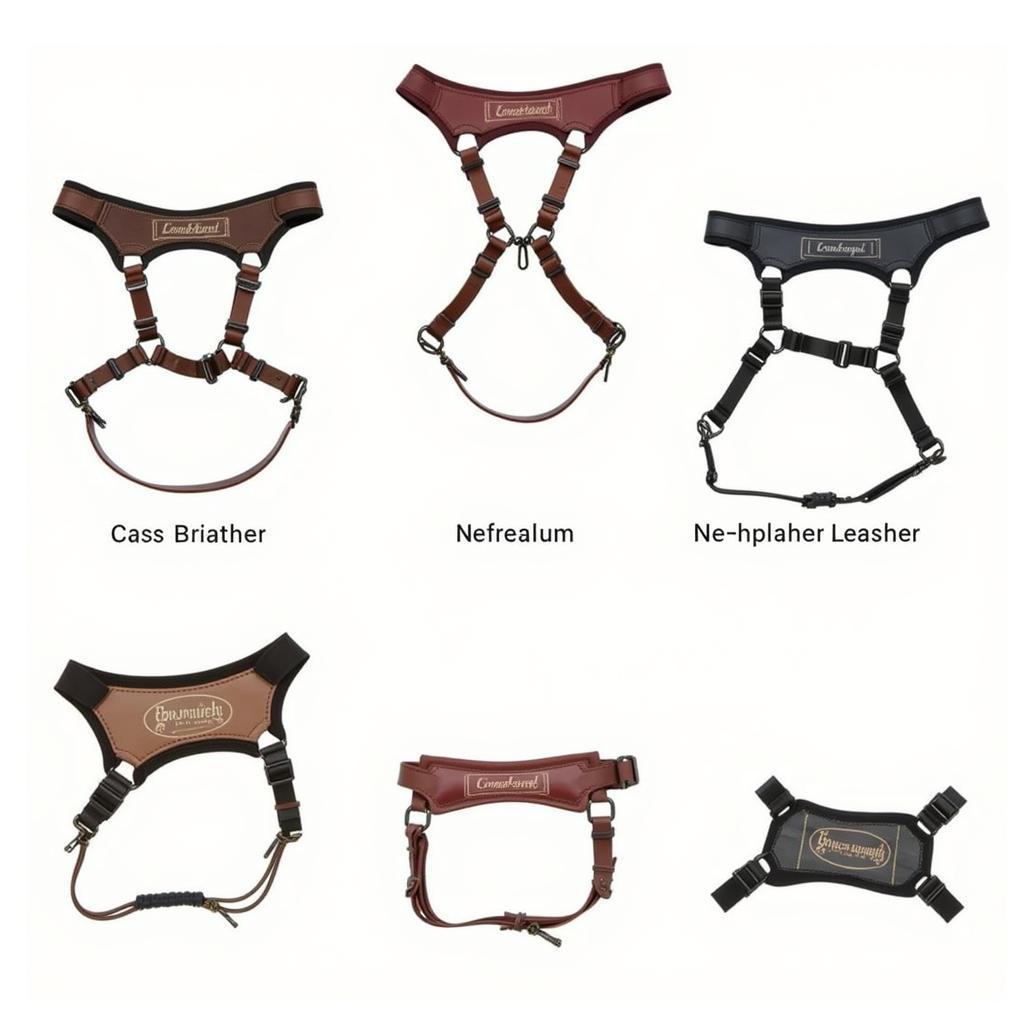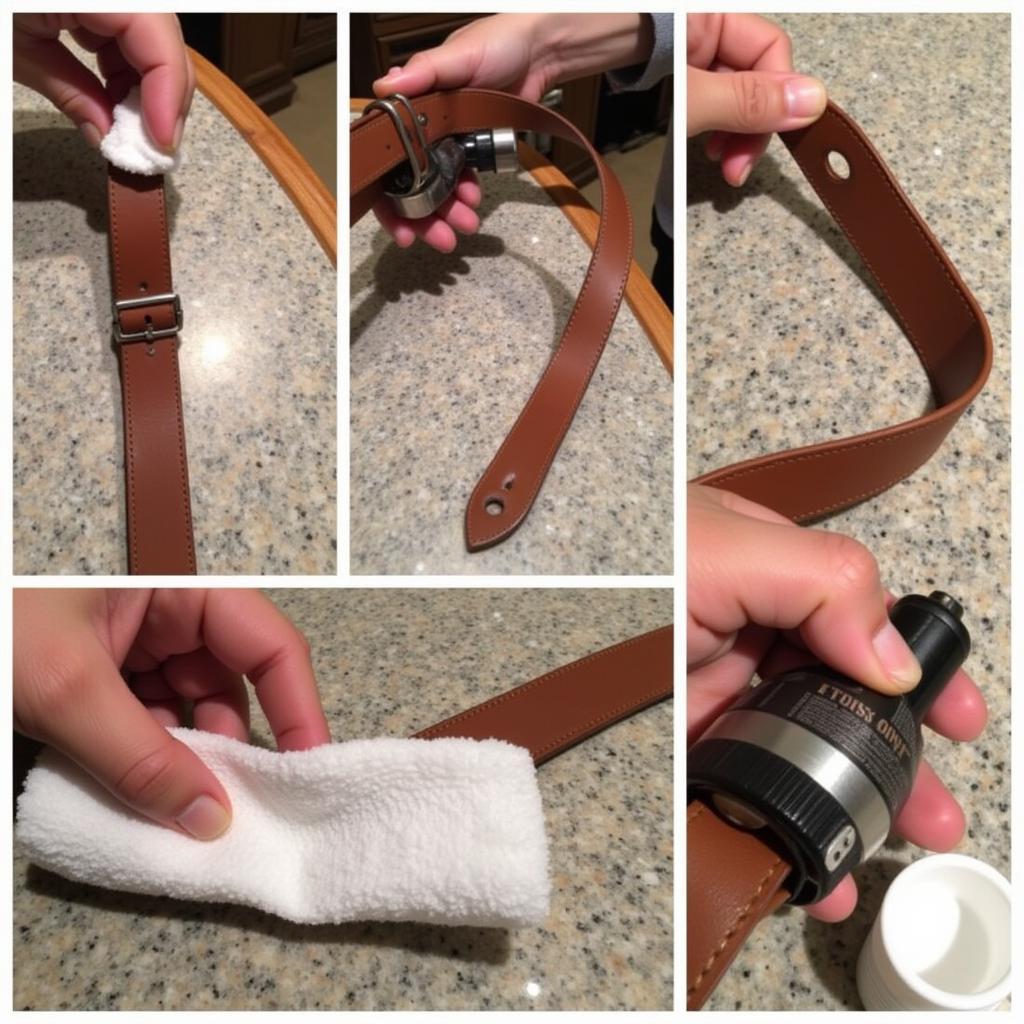A Horse Chest Strap, a crucial part of many equine harnesses and riding equipment, plays a vital role in both the horse’s comfort and the rider’s control. It’s a key component that distributes pressure, stabilizes the saddle, and aids in communication between horse and rider. Choosing and fitting a horse chest strap correctly is paramount for ensuring a positive riding experience for both horse and human.
Choosing the Right Horse Chest Strap
Selecting the appropriate horse chest strap depends on a number of factors, including the discipline, the horse’s conformation, and the rider’s preferences. For disciplines like driving, a sturdy and adjustable chest strap is essential for distributing the force exerted by the carriage. In riding, a correctly fitted chest strap helps keep the saddle secure, especially during more strenuous activities. One must consider the horse’s build as well; a horse with a broad chest will require a longer strap than a horse with a narrower frame. Remember, comfort is key, and a poorly fitted strap can lead to chafing and discomfort for the horse.
Just like choosing the right horses collar, choosing a chest strap requires careful consideration.
 Different Types of Horse Chest Straps
Different Types of Horse Chest Straps
Fitting the Horse Chest Strap: A Step-by-Step Guide
Properly fitting a horse chest strap is crucial for ensuring the horse’s comfort and the effectiveness of the equipment. An improperly fitted strap can cause discomfort, restrict movement, and even lead to injury. Follow these steps to ensure a correct fit:
- Position the Saddle: Ensure the saddle is placed correctly on the horse’s back, in its natural weight-bearing position.
- Attach the Chest Strap: Connect the chest strap to the designated attachments on the saddle. These attachments may vary depending on the type of saddle and harness being used.
- Adjust the Length: Adjust the length of the chest strap so that it lies flat against the horse’s chest, approximately four fingers’ width behind the horse’s elbow. It should be snug but not tight, allowing for full range of motion in the shoulders and legs.
- Check for Comfort: Run your hand under the strap to ensure there are no pressure points or areas of tightness. The strap should not pinch or rub against the horse’s skin.
- Re-check the Fit: After riding for a short period, re-check the fit of the chest strap to ensure it has not loosened or shifted.
Materials and Maintenance of Horse Chest Straps
Horse chest straps are typically made from leather, neoprene, or synthetic materials. Leather is a traditional and durable choice, while neoprene offers flexibility and cushioning. Synthetic materials are often lightweight and easy to clean.
Just like caring for your medium weight horse blankets, maintaining your horse chest strap is crucial for its longevity. Regular cleaning and conditioning will help prevent cracking and maintain the strap’s integrity. After each use, wipe the strap clean with a damp cloth and allow it to air dry. Leather straps should be conditioned regularly with a leather conditioner to prevent drying and cracking.
“A well-maintained horse chest strap is an investment in both the horse’s comfort and the longevity of your equipment,” says renowned equine veterinarian, Dr. Amelia Hawthorne.
Common Problems with Horse Chest Straps
A common issue with horse chest straps is improper fit, leading to rubbing and sores. Another issue can be breakage due to wear and tear or improper maintenance. Choosing high-quality materials and ensuring a proper fit can mitigate these problems. Additionally, regularly inspecting the strap for signs of wear and tear is essential for preventing equipment failure.
Knowing about different harness parts for horses will help you understand their importance and maintenance.
 Cleaning a Leather Horse Chest Strap
Cleaning a Leather Horse Chest Strap
Conclusion
The horse chest strap is a small but significant piece of equipment that plays a vital role in ensuring both the horse’s comfort and the rider’s control. Choosing the right type of chest strap, fitting it correctly, and maintaining it properly will ensure a safe and enjoyable riding experience for both horse and rider. A properly fitted horse chest strap is a critical investment in your horse’s well-being.
FAQ
- How tight should a horse chest strap be? It should be snug but not restrictive, allowing four fingers to fit comfortably between the strap and the horse’s chest.
- What are horse chest straps made of? They are commonly made from leather, neoprene, or synthetic materials.
- How do I clean a leather horse chest strap? Wipe it down with a damp cloth after each use and condition it regularly.
- Why is my horse’s chest strap rubbing? It may be improperly fitted or the wrong size.
- What are the different types of horse chest straps? There are various types designed for different disciplines and purposes, including driving and riding.
- How often should I check my horse’s chest strap? Inspect it before each ride for signs of wear and tear.
- Where can I buy a horse chest strap? Tack shops and online retailers offer a variety of options.
Common Scenarios and Questions
- Scenario: My horse’s chest strap keeps slipping.
- Possible Solutions: Adjust the strap tighter, ensure the saddle is positioned correctly, or consider a different type of chest strap.
- Scenario: My horse has developed a sore under the chest strap.
- Possible Solutions: Loosen the strap, ensure proper fit, check for any rough edges or debris, and allow the area to heal. Consider using padding.
Further Exploration
You can find more information on related topics on our website, such as closeout horse blankets and horse rugs.
Contact us for assistance: Phone: 0772127271, Email: [email protected] Or visit us at: QGM2+WX2, Vị Trung, Vị Thuỷ, Hậu Giang, Việt Nam. Our customer service team is available 24/7.